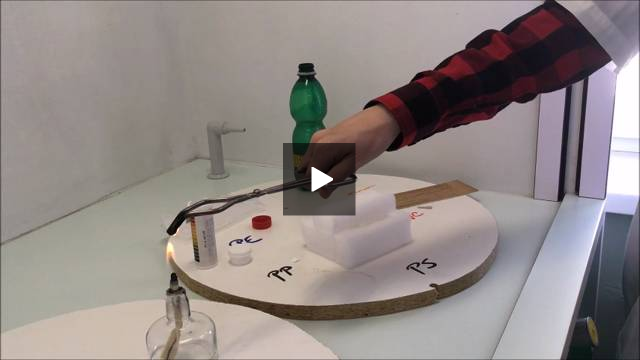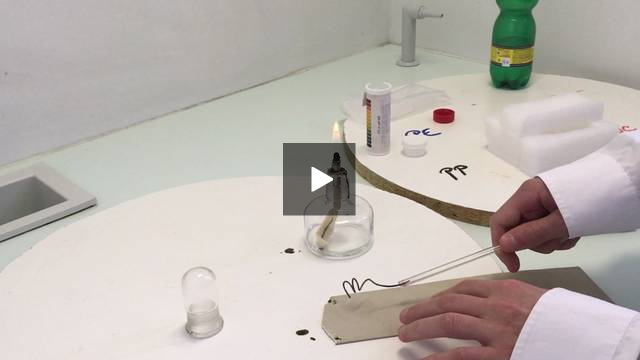Our experiments with plastics
Density of plastics

In this experiment we used these plastics: PVC (polyvinyl chloride), PE (polyethylene), PET, PP (polypropylene), PS (polystyrene). Only PVC dropped on the bottom. The other plastics stayed on the bosom.
Burning of plastics

We were watching fire affect on diffirent plastics and we saw: PE burnt to air as soon as it touched fire, PET was smoking for a some time and it was getting smaller and changed colour to black, PP was shinning with little light from fire for a long time, PS disapeared into thin air after it touched the fire, PVC was burning for long time with a lot of smoke. Summary: every type of plastic acts diffirent to the fire thanks to it's diffirent chemical abilities.
The Beilstein test

The Beilstein test is a simple qualitative test to prove organic halogenated derivatives. Developed by chemist Friedrich Konrad Beilstein. The principle of the test is that the copper wire or plate is heated in a Bunsen oxidation flame until it is covered with copper oxide (CuO). Subsequently, it is immersed in the solution to be examined and again placed in the flame. The copper- halide flame staining is evidence of the presence of halonate in the sample. And the flame was turned green.
The static electricity

In general, the hair stick to the ballon for a longer amount of time as you increased the number of times you rubbed the balloon on the hair. Hair is a conductive material, which means it readily gives away its electrons. Consequently, when you rub a balloon on hair, this causes the electrons to move from the hair to the balloon's surface. The rubbed part of the balloon now has a negative charge. Objects made of rubber, such as the balloon, are electrical insulators, meaning that they resist electric charges flowing through them. This is why only part of the balloon may have a negative charge (where the hair rubbed it) and the rest may remain neutral. When the balloon has been rubbed enough times to gain a sufficient negative charge, it will be attracted to the hair. Although the hair should normally have a neutral charge, the charges within it can rearrange so that a positively charged area attracts the negatively charged balloon. Because the hair is also an electrical insulator, the charge is not immediately discharged.